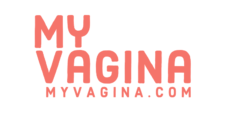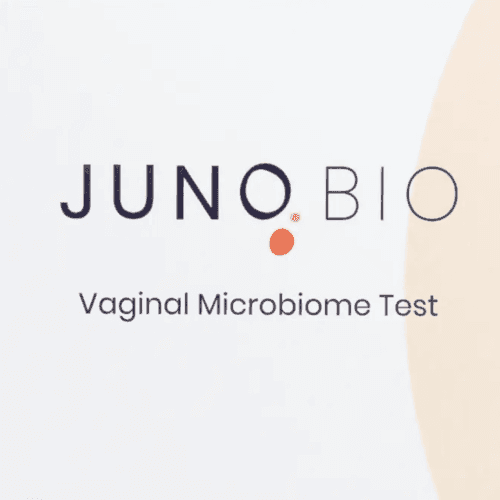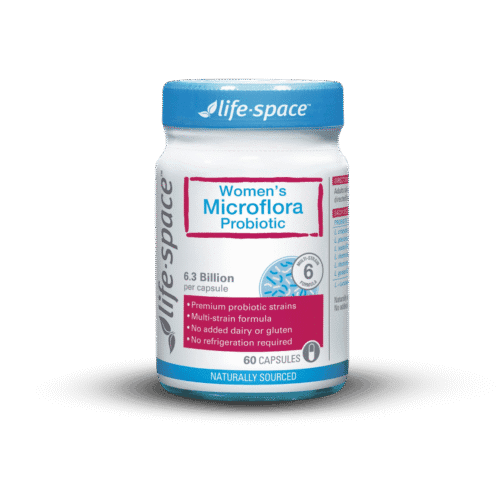Phytoestrogens are plant chemicals, flavonoids, that behave like oestrogen in humans. These plant oestrogens are about 300 times weaker than human estrogen, which can augment the estrogenic effect in the body by weakening regular estrogen (in case of excess) or increasing it from low estrogen (say in postmenopause)1.
We can use phytoestrogens for a weak and strong relative effect, depending on the person’s needs. We would also be cautious in using phytoestrogens in men, babies, children and those without estrogen imbalances.
Some Sciencey Stuff
Most phytoestrogens are flavonoids, with the most potent being coumestans and isoflavones (genistein and daidzein). Most research has been done on isoflavones, which are found in soy and red clover. Lignan - not a flavonoid - is also a phytoestrogen. These are phenolic phytoestrogens.
Some other molecules, plant steroids and terpenoids, may also have an estrogenic effect.
Sources of phytoestrogens
While many plants contain phytoestrogens, only some contain enough that we’d use them medicinally.
Foods with phytoestrogens include:2,3
- Flax seeds (high in lignans)
- Legume seeds (soy, beans, peas, high in isoflavones)
- Soy products (tofu, tempeh, soy milk, soybeans, high isoflavones)
- Sesame seeds
- Wheat
- Berries
- Oats
- Barley
- Dried beans
- Lentils
- Rice
- Alfalfa
- Mung beans
- Apples
- Carrots
- Wheat germ
- Ricebran
- Soy-linseed bread
The amount of phytoestrogens in a particular food varies depending on processing. An intake of 45mg of phytoestrogens daily may have a stabilising effect on hormones.
Searchable phytoestrogens food list
| Plant species (Common name) | μg/100 g dry weight | Levels |
|---|---|---|
| Plum | 5 | Very Low |
| Wheat (white meal) | 8 | Very Low |
| Banana | 10 | Very Low |
| Apple | 12 | Very Low |
| Oatmeal | 13 | Very Low |
| Potato (peeled) | 16 | Very Low |
| Lentil | 23 | Very Low |
| Pea | 27 | Very Low |
| Cabbage | 33 | Very Low |
| Tritacle (meal) | 35 | Very Low |
| Wheat (wholegrain) | 36 | Very Low |
| Cabbage, Turnip-rooted | 43 | Very Low |
| Poppy seed | 51 | Very Low |
| Tritacle (wholegrain, wheat variant) | 52 | Very Low |
| Barley (wholegrain) | 80 | Low |
| Barley bran | 85 | Low |
| Onion | 91 | Low |
| Pistachio nut | 96 | Low |
| Beetroot | 100 | Low |
| Almond | 111 | Low |
| Cauliflower | 111 | Low |
| Rye meal (wholegrain) | 112 | Low |
| Wheat bran | 121 | Low |
| Hazelnut | 123 | Low |
| Paprika | 124 | Low |
| Rasberry | 139 | Low |
| Sharon | 145 | Low |
| Cabbage, Red | 160 | Low |
| Red currant | 165 | Low |
| Walnut | 173 | Low |
| Oat bran | 179 | Low |
| Witloof/Endive | 190 | Low |
| Cloudberry | 203 | Moderate |
| Caraway seed | 235 | Moderate |
| Chickpea/Garbanzo bean | 250 | Moderate |
| Black-eyed pea/Cow pea | 255 | Moderate |
| Cashew nut | 261 | Moderate |
| Rye bran | 299 | Moderate |
| Black gram bean | 361 | Moderate |
| Carrot (skin on) | 370 | Moderate |
| Garlic | 380 | Moderate |
| Kidney bean | 396 | Moderate |
| Black currant | 398 | Moderate |
| Peanut | 420 | Moderate |
| Broccoli | 451 | Moderate |
| American groundnut (potato bean) | 511 | Moderate |
| Pigeon pea | 517 | High |
| Clover seed | 518 | High |
| Zuccini (skin on) | 817 | High |
| Blueberry | 835 | High |
| Sesame seed | 852 | High |
| Cranberry | 1054 | High |
| Strawberry | 1210 | High |
| Lingonberry | 1510 | High |
| Tea, Yellow label tea-bag | 2591 | Very High |
| Sunflower seed | 2600 | Very High |
| Tea, Earl Grey tea (Oriental tea mixture) | 3212 | Very High |
| Kudzu leaf | 3371 | Very High |
| Tea, Pure Lapsang Souchong tea (China) | 3520 | Very High |
| Tea, China Gunpowder | 3672 | Very High |
| Pumpkin (peeled) | 3874 | Very High |
| Tea, Japan Sencha Green tea | 4075 | Very High |
| Tea, Nippon Sencha Green tea | 5565 | Very High |
| Tea, Prince of Wales, tea-bag | 5768 | Very High |
| Tea, China Green tea | 5965 | Very High |
| Tea, Green | 8000 | Very High |
| Black tea | 8500 | Very High |
| Soy bean | 88843 | Extremely High |
| Kudzu root | 197631 | Extremely High |
| Flaxseed | 370987 | Extremely High |
| Flaxseed (crushed) | 547300 | Extremely High |
Herbal medicines with phytoestrogens include:
- Red clover
- Alfalfa
- Hops (what beer is made from)
- Liquorice
- Turmeric
How plant estrogens work in the human body
Phytoestrogens bind to certain estrogen receptors in select tissues, activating or down-regulating the response of cells.
Breast and uterine tissue have the most ER-alpha estrogen receptors, while metabolic processes for the cardiovascular system and bones tend towards ER-beta receptors.
With other factors in play, the impacts of estrogens can be estrogenic or anti-estrogenic. In breast and uterine tissue, ER alpha receptors are downregulated by phytoestrogens, which may explain the possible anti-cancer benefits.
Phytoestrogens may also impact the balance of estrogen metabolites (the end result of estrogen metabolism), of which three are unfavourable to the body (16 alpha-hydroxy estrone, 4-hydroxy estradiol and 4-hydroxy estrone) and one favourable (2-hydroxy estrone).
Phytoestrogens may protect against cancer in the prostate4, breast and uterus (and others)5 and may offer protection against heart disease and osteoporosis. Soybeans contain multiple anticarcinogens, with isoflavones noteworthy due to soy being the only significant dietary source.
Phyto-oestrogens and the thyroid
Isoflavones in soy and flavonoids from other plants inhibit thyroid peroxidase, an enzyme involved in thyroid hormone synthesis. High intake of phyto-oestrogens may result in worsening hypothyroidism or goitre in iodine-deficient individuals or those with hypothyroidism.4
Iodine deficiency increases the thyroid-blocking impact of soy, with iodine reversing this process.
How to use soy products for their phytoestrogens
In postmenopause, phytoestrogens can play a role alongside the adrenals in adding to the overall estrogenic effect on the body, helping to relieve genitourinary symptoms of menopause (GSM) – dry, easily irritated or damaged vaginal and vulvar tissue, urinary incontinence, etc.
We also use phytoestrogens in vaginal treatments such as Fennelope fennel pessaries for a local effect, which has been shown to thicken vaginal epithelial cells5. This thickening reduces the vulnerability of cells and can help provide much-needed glycogen in vaginal cells to support protective vaginal flora.
How soy is helpful in other ways
Soy protein can be helpful in some people as a source of complete protein, as soybeans contain all essential amino acids.
People with a history of hormone-related cancers (breast, ovarian, prostate) may benefit from a low animal fat diet and future protection from endogenous estrogens.
Regular intake of soy products can also decrease ‘bad’ cholesterol (low-density lipoproteins or LDL cholesterol) by as much as 10%, with every 1% drop equalling around a 2% drop in heart disease risk. This is significant. The FDA determined that diets with four daily soy servings can reduce levels of low-density lipoproteins.
Soy products may be a valuable dietary addition for some people, beyond the potential benefits for vaginal health.
References
- 1.Setchell KDR. Soy Isoflavones—Benefits and Risks from Nature’s Selective Estrogen Receptor Modulators (SERMs). Journal of the American College of Nutrition. Published online October 2001:354S-362S. doi:10.1080/07315724.2001.10719168
- 2.Mazur W, Adlercreutz H. Naturally occurring oestrogens in food. Pure and Applied Chemistry. Published online September 1, 1998:1759-1776. doi:10.1351/pac199870091759
- 3.Thompson LU, Boucher BA, Liu Z, Cotterchio M, Kreiger N. Phytoestrogen Content of Foods Consumed in Canada, Including Isoflavones, Lignans, and Coumestan. Nutrition and Cancer. Published online July 2006:184-201. doi:10.1207/s15327914nc5402_5
- 4.Doerge DR, Sheehan DM. Goitrogenic and estrogenic activity of soy isoflavones. Environmental Health Perspectives. Published online June 2002:349-353. doi:10.1289/ehp.02110s3349
- 5.Yaralizadeh M, Abedi P, Najar S, Namjoyan F, Saki A. Effect of Foeniculum vulgare (fennel) vaginal cream on vaginal atrophy in postmenopausal women: A double-blind randomized placebo-controlled trial. Maturitas. Published online February 2016:75-80. doi:10.1016/j.maturitas.2015.11.005

Get a fresh perspective with a qualified, experienced vulvovaginal specialist naturopath.
This product has multiple variants. The options may be chosen on the product page
The most comprehensive vaginal microbiome test you can take at home, brought to you by world-leading vaginal microbiome scientists at Juno Bio.

Promote and support a protective vaginal microbiome with tailored probiotic species.






